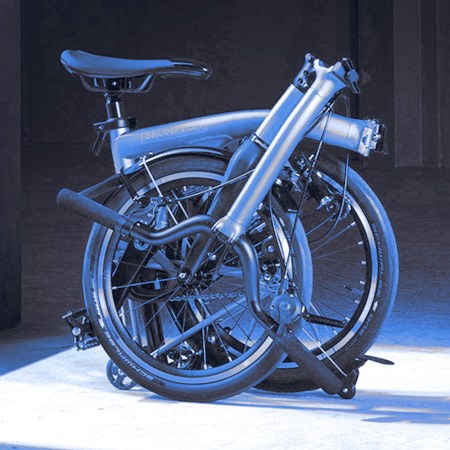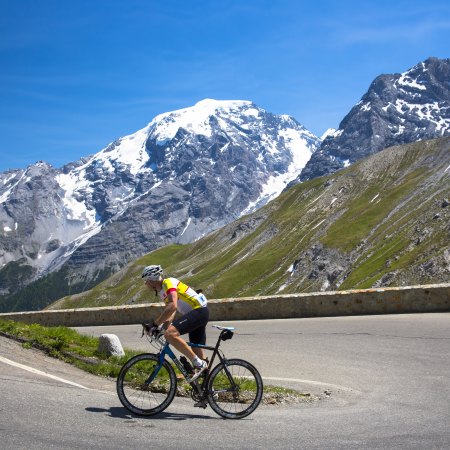What’s harder then racing the Tour de France? Try watching it. Covering over 2,000 miles in 21 stages, La Grande Boucle — as the French call it — is the world’s hardest and most prestigious bike race, as well as one of the more confusing sporting competitions around, especially to befuddled American TV viewers who’ve never donned lycra or shaved their legs.
It can also seem, dare we say it, boring. Who really has the time or desire to watch six-hour stages contested by 176 emaciated men with unpronounceable last names (Tadej Pogač-who?!) as they pedal around France for three weeks? To the uninitiated spectator, that must seem about as appealing as watching paint dry or trying to solve for X in an AP calc problem set (or, you know, as sleep-inducing as the “sport” of golf). No wonder three-time World Champion and 12-time TDF stage winner Peter Sagan once admitted that bike racing is boring to watch on TV.
We disagree. The Tour de France is a wildly entertaining spectacle (emphasis on that last word), you just need to know what to look for and how to understand a few of the nuances that make this race the most-watched annual sporting event in the world. Besides, it’s not like you’ve got World Cup Soccer or the Summer Olympics vying for your attention this July, and we all know that baseball doesn’t get interesting until the playoffs — so what else is going to entice you to blow off responsibilities in favor of lying on the couch glued to the tube for the next few weeks?
To that end, we’ve put together a handy little primer that should get you up to speed on all things Tour de France, thus making this year’s viewing a bit better than simply salivating over those sweeping aerial shots of the French countryside. Read on, future bike racing fan!
Races within the race

Unlike other sports, there are multiple winners in the Tour de France. The most prestigious prize is of course winning the Yellow Jersey, that banana-hued piece of kit awarded to the rider with the best overall time (tallied by their stage finishes on each day). To wear the Yellow Jersey on the Champs-Élysées in Paris — the final stage of any Tour de France — is what seals your name in the annals of bike racing history as the overall winner, but the jersey itself can change hands (or torsos) many times throughout the three-week race. Meaning the early half of the race is colored by opportunists, the type of riders who don’t have a shot at overall victory (most likely because they can’t keep pace with the favorites once the route hits the torturous mountain passes of the Alps or Pyrenees) but will pull themselves out of their skin to get in a stage-winning breakaway in the hopes of donning the jersey of race leader, even for a single day.
Other career-making jerseys up for grabs are the Polkadot, awarded to the race’s best climber, and the Green Jersey of points leader — aka the Tour’s most consistent finisher. The former is determined in the mountains, with King of the Mountains points awarded at the top of each pass and stage finish — a carrot that encourage’s Hail Mary attacks over the race’s toughest terrain. The Green Jersey, on the other hand, is usually determined in the sprints — rack up enough wins and fast top-five finishes, usually contested elbow to elbow, with plenty of crashes and acrobatic bike throws at the line thrown in for good measure, and the coveted shirt (and prize money) are yours.
And then there are the stages themselves, 21 of which are up for grabs. The Tour is so big, so venerated, so attention-grabbing, that a single stage win here eclipses virtually everything else in a sport whose season runs from February through October. That means the majority of the pack — or the Peloton (the French word, not the clunky indoor stationary bike with the plummeting share price) — is vying for single day honors.
All this equates to many races going on simultaneously on the open road each day, and — yes — a lot of excitement to behold.
Tactics, especially the dirty kind

Bike racing is not only a sport of endurance and sheer power, the kind determined by watts and weight, but one of tactical nous. That means the muscle between these guys’ ears is often times as important as the ones in their legs — especially on the flatter or slightly lumpy stages, where attacking at the right time, knowing when to draft, when to feign exhaustion in order to skip a turn at the front and how to time one’s sprint can lead to a win. As for those ears, each rider has a race radio, allowing their team directors — following in the caravan of cars and watching on a portable TV — to dispense words of wisdom, from coaching advice to invaluable data. One simple rule: if you’re in a breakaway and you can’t tell which rider is working the hardest, it’s because you’re that rider…and you never want to be that rider. For all its epic beauty, cycling is a down and dirty sport, and winners often rely on out-tricking their rivals.
Another way tactics come into play is when one or two teams take control of a race. Sometimes this comes in the form of chasing down a dangerous rider off the front (cycling parlance for “in the lead”); it’s astonishing to see how a dedicated group of guys, pulling through with the efficiency of a Swiss watch, can reel in a rider who only a few miles prior had a seemingly insurmountable, multiple minute gap on the field. This can happen midway through a stage, or in the closing meters, when a “breakaway artist” has been soloing all day only to get swallowed up by the peloton millimeters from the line. Talk about a heart-breaking nail-biter.
Still, the most exciting (and unexpected) moments arise when team tactics and the natural elements collide at the right time. Cycling isn’t contested in a stadium but in the natural environment, where anything from searing temperatures to alpine snowstorms can wreak havoc on the race. But it’s the crosswinds that can puncture Yellow Jersey dreams for even the five-star favorites, especially when the pack catches them sleeping. Wind is a critical factor in cycling. Have it at your back and you’re golden. Face a headwind, and you’ll be grunting and cursing all day. Crosswinds, however, are far more mercurial. One moment the pack has the wind at their right, the next (perhaps coming out of a turn) and it’s at their left, the effect of which can rip a field to shreds. You’ll know the race is in the crosswinds when suddenly the pack has aligned itself into echelons, each one stretching diagonally from one side of the road to the next. Instead of drafting in a direct line, now racers must draft diagonally to combat the crosswinds. Get caught out of the first echelon (i.e. there is simply no space for you left in the diagonal line), and you’ll have to start a new one a few feet back. Gaps open up quickly, with even the world’s strongest riders unable to close a tiny space up to the next echelon. If an overall contender misses the move, watch their general classification competitors — smelling blood in the water — rally their teammates on the front to put the screws to them. Suddenly, a flat stage that on paper should have had no bearing on the overall standings becomes a critical one, with a competitor caught out by the crosswinds losing minutes upon minutes before the day is done. Don’t be fooled by the skinny limbs and colorful kits —bike racing is a cruel, cruel sport only favoring the hardest of riders.
No timeouts

Unlike other sports, once a stage starts in the Tour there is no stopping it until you roll across the finish line. Too hot? Fuck you. Too cold? Fuck you. Need a breather? Gotta ice that knee? Take a dump (as Greg LeMond famously did in a teammate’s hat)? Fuck you, fuck you, fuck you. Viewers of the 2011 Tour de France will remember when Dutchman Johnny Hoogerland got side-swiped by a team car into a barbed-wire fence and — after being shredded to bits — finished the race resembling a reincarnated mummy. Or, later in that same race, when compatriot Laurens Ten Dam face-planted off a mountain pass and finished up looking like the photo above (does the TDF hate the Dutch?). And then there was American Tyler Hamilton, who broke his collarbone in Stage 2 of the 2003 Tour and still finished fourth overall (while also taking a stage win) three weeks later. Sure, the guy was doping, but last time we checked EPO doesn’t ease the pain of broken bones.
The trick is to make the other guy lose

Modern cycling is a sport of science. Get your marginal gains right, from equipment and weight to diet and sleep and recovery ice baths, and you’ve already won part of the battle. And, yes, it’s a sport that requires you to push yourself beyond the realms of physical exhaustion.
But this is a competition, and that means trying to make the other guy lose. This can come in the form of the aforementioned crosswinds, or out-witting a competitor by feigning exhaustion, only to pip them at the line for stage glory. The best time to witness such brutality, however, is high in the Alps and Pyrenees. Laymen often mistake bike racing as a game of attrition favoring whomever can keep pedaling the longest and hardest. While that is more or less true, it’s also a sport of attacks, and the best place to witness attacks — especially the repeated kind designed to break a competitor down — is when the road tilts upward. Think of bikers as boxers, and the climbers are your featherweights. Rather than dancing around delivering body blow after body blow, climbers flutter up the road ahead at speeds your average person couldn’t even match on the flats. They’ll do this for a minute, maybe two, before settling into a slower pace, allowing their rivals — particularly bigger guys with the type of diesel engine that can’t match such accelerations — to claw their way back up to them. Do this enough times, each attack being a jab or upper cut, and finally the climber delivers the knockout punch, leaving a completely spent rival in their wake, unable to respond and destined to lose minutes before they reach the finish, several dizzying switchbacks still up the road.
Doping drama

This is a cycling article, and you can’t write about cycling without acknowledging the 800 pound gorilla in the room that is doping. Illegal substances have been synonymous with the sport since its inception, meaning well before a certain Lance Armstrong issued his mea culpa to Oprah. When two-time Tour champ Fausto Coppi was once asked if he ever used amphetamines, Il Campionissimo casually replied: “Only when it’s absolutely necessary,” before admitting that those necessary moments were virtually every time he lined up to race his bike.
We could go on and on about the ills doping has wrought within the seemingly sanctified realms of pro cycling, but it’s also — you know — made things a bit spicy. Whole teams have been ejected from the race, riders have died, others have gone to prison, champs have been stripped of their titles and labeled pariahs — what other sport courts such day-to-day drama? Imagine LeBron being pulled mid-game? Jeter tarred and feathered and driven out of Yankee stadium? Brady forced to pluck off his Super Bowl rings one by one? It just doesn’t happen to the same degree as it does in cycling, making these twig-like, lycra-loving riders the bad boys of pro sports.
In fact, just this week the Bahrain Victorious team has been raided twice by Europol, with 412 capsules of an undetermined substance seized. Yes, fellow newly-minted cycling fans, let the Tour de France begin!
This article was featured in the InsideHook newsletter. Sign up now.






















